A GILT COPPER ALLOY FIGURE OF VIRUPA TIBET, 14TH/15TH CENTURY Himalayan Art Resources item no.68491 14 cm (5 1/2 in.) high Fußnoten Published David Weldon and Jane Casey Singer, The Sculptural Heritage of Tibet: Buddhist Art in the Nyingjei Lam Collection, London, 1999, pp.176-7, pl.42. Franco Ricca, Arte Buddhista Tibetana: Dei e Demoni dell'Himalaya, Turin, 2004, p.195, fig.IV.44. Exhibited Arte Buddhista Tibetana: Dei e Demoni dell'Himalaya, Palazzo Bricherasio, Turin, 18 June – 19 September 2004. Casting the Divine: Sculptures of the Nyingjei Lam Collection, Rubin Museum of Art, New York, 2 March 2012 – 11 February 2013. Provenance The Nyingjei Lam Collection On loan to the Ashmolean Museum, Oxford, 1996-2005 On loan to the Rubin Museum of Art, New York, 2005-2019 Of its scale, this is one of the best cast gilt bronzes of Virupa, a beloved c.9th-century tantric master and legendary rascal. Depicting Virupa with his right arm raised up to the sky, the sculpture recalls the most amusing episode from the mahasiddha's life: when he stopped the movement of the sun to avoid settling a bar tab. Virupa is a 'root guru' for the Sakya order of Tibetan Buddhism and the first mortal master of its lamdre teachings. The lamdre teachings are a potent tantric practice that can lead to enlightenment within a single lifetime. Once an abbot of Nalanda monastery, and after giving up on decades of unsuccessful attempts at the Chakrasamvara tantra, Virupa received the lamdre teachings directly from the deity Vajra Nairatmya. His subsequent antinomian rituals cost him his affiliation, as other members of the monastic hierarchy frowned upon his use of meat and alcohol. Banished from Nalanda, he wandered as an eccentric enlightened yogin, performing a number of miracles. One of the details distinguishing this bronze's quality is the garland of modelled flowers draped over Virupa's body. The garland is ubiquitous among portraits of Virupa, symbolic of his ecstatic life in the wilderness. However, rather than being cast as part of the surface of his body, here it is modelled three-dimensionally resting around his shoulders (contrast with a Virupa sold at Bonhams, Hong Kong, 29 November 2016, lot 102). His finely articulated coiffure is yet another example of the superb craftmanship exhibited by this bronze, as are Virupa's carefully delineated teeth. The bronze was most likely made by a Newari master craftsman working for a Tibetan patron. The beautifully proportioned and sensuously modeled body resembles contemporaneous works from the Newari tradition of Nepal, as does the separately cast flower garland. Elements indicating a Newar adapting his work for a Tibetan patron—aside from the obvious Sakya subject—include the thick flat rim of the base below a beaded border, common among Tibetan sculptures of the 15th century. As Weldon and Casey Singer have discussed, Newari artists, known for their skilled metal casting, were frequently hired by wealthy Tibetan patrons during the 14th-15th centuries—among them notably the Sakya order (The Sculptural Heritage of Tibet, London, 1999, p.176). Two closely related examples of Virupa, also likely Newari products for Tibetan patrons, are a gilt bronze sold at Bonhams, New York, 16 March 2015, lot 16, and a silver figure with gilt bronze base in the collection of the Museum Rietberg (2007.72), currently attributed to the Khasa Malla Kingdom spanning western Nepal and western Tibet. The present bronze has also clearly been made within a period of refinement in Tibetan art inspired by cultural exchange with the Yuan and Early Ming courts of China. For example, the incised foliate scrolls decorating the meditation band around Virupa's waist and right shin are clearly inspired by Yuan textiles; they closely resemble the decorative patterns behind donor figures on a famed kesi Vajrabhairava mandala in the Metropolitan Museum of Art (1992.54). Similar designs are also reproduced on several sculptures attributed to the
A GILT COPPER ALLOY FIGURE OF VIRUPA TIBET, 14TH/15TH CENTURY Himalayan Art Resources item no.68491 14 cm (5 1/2 in.) high Fußnoten Published David Weldon and Jane Casey Singer, The Sculptural Heritage of Tibet: Buddhist Art in the Nyingjei Lam Collection, London, 1999, pp.176-7, pl.42. Franco Ricca, Arte Buddhista Tibetana: Dei e Demoni dell'Himalaya, Turin, 2004, p.195, fig.IV.44. Exhibited Arte Buddhista Tibetana: Dei e Demoni dell'Himalaya, Palazzo Bricherasio, Turin, 18 June – 19 September 2004. Casting the Divine: Sculptures of the Nyingjei Lam Collection, Rubin Museum of Art, New York, 2 March 2012 – 11 February 2013. Provenance The Nyingjei Lam Collection On loan to the Ashmolean Museum, Oxford, 1996-2005 On loan to the Rubin Museum of Art, New York, 2005-2019 Of its scale, this is one of the best cast gilt bronzes of Virupa, a beloved c.9th-century tantric master and legendary rascal. Depicting Virupa with his right arm raised up to the sky, the sculpture recalls the most amusing episode from the mahasiddha's life: when he stopped the movement of the sun to avoid settling a bar tab. Virupa is a 'root guru' for the Sakya order of Tibetan Buddhism and the first mortal master of its lamdre teachings. The lamdre teachings are a potent tantric practice that can lead to enlightenment within a single lifetime. Once an abbot of Nalanda monastery, and after giving up on decades of unsuccessful attempts at the Chakrasamvara tantra, Virupa received the lamdre teachings directly from the deity Vajra Nairatmya. His subsequent antinomian rituals cost him his affiliation, as other members of the monastic hierarchy frowned upon his use of meat and alcohol. Banished from Nalanda, he wandered as an eccentric enlightened yogin, performing a number of miracles. One of the details distinguishing this bronze's quality is the garland of modelled flowers draped over Virupa's body. The garland is ubiquitous among portraits of Virupa, symbolic of his ecstatic life in the wilderness. However, rather than being cast as part of the surface of his body, here it is modelled three-dimensionally resting around his shoulders (contrast with a Virupa sold at Bonhams, Hong Kong, 29 November 2016, lot 102). His finely articulated coiffure is yet another example of the superb craftmanship exhibited by this bronze, as are Virupa's carefully delineated teeth. The bronze was most likely made by a Newari master craftsman working for a Tibetan patron. The beautifully proportioned and sensuously modeled body resembles contemporaneous works from the Newari tradition of Nepal, as does the separately cast flower garland. Elements indicating a Newar adapting his work for a Tibetan patron—aside from the obvious Sakya subject—include the thick flat rim of the base below a beaded border, common among Tibetan sculptures of the 15th century. As Weldon and Casey Singer have discussed, Newari artists, known for their skilled metal casting, were frequently hired by wealthy Tibetan patrons during the 14th-15th centuries—among them notably the Sakya order (The Sculptural Heritage of Tibet, London, 1999, p.176). Two closely related examples of Virupa, also likely Newari products for Tibetan patrons, are a gilt bronze sold at Bonhams, New York, 16 March 2015, lot 16, and a silver figure with gilt bronze base in the collection of the Museum Rietberg (2007.72), currently attributed to the Khasa Malla Kingdom spanning western Nepal and western Tibet. The present bronze has also clearly been made within a period of refinement in Tibetan art inspired by cultural exchange with the Yuan and Early Ming courts of China. For example, the incised foliate scrolls decorating the meditation band around Virupa's waist and right shin are clearly inspired by Yuan textiles; they closely resemble the decorative patterns behind donor figures on a famed kesi Vajrabhairava mandala in the Metropolitan Museum of Art (1992.54). Similar designs are also reproduced on several sculptures attributed to the

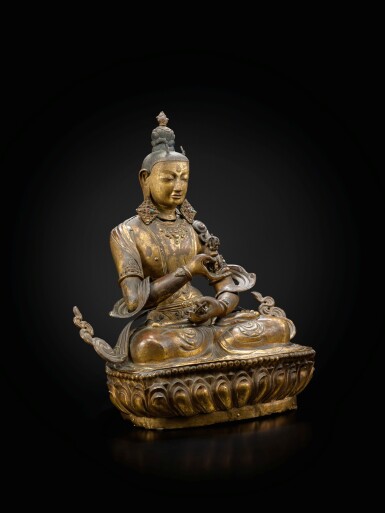
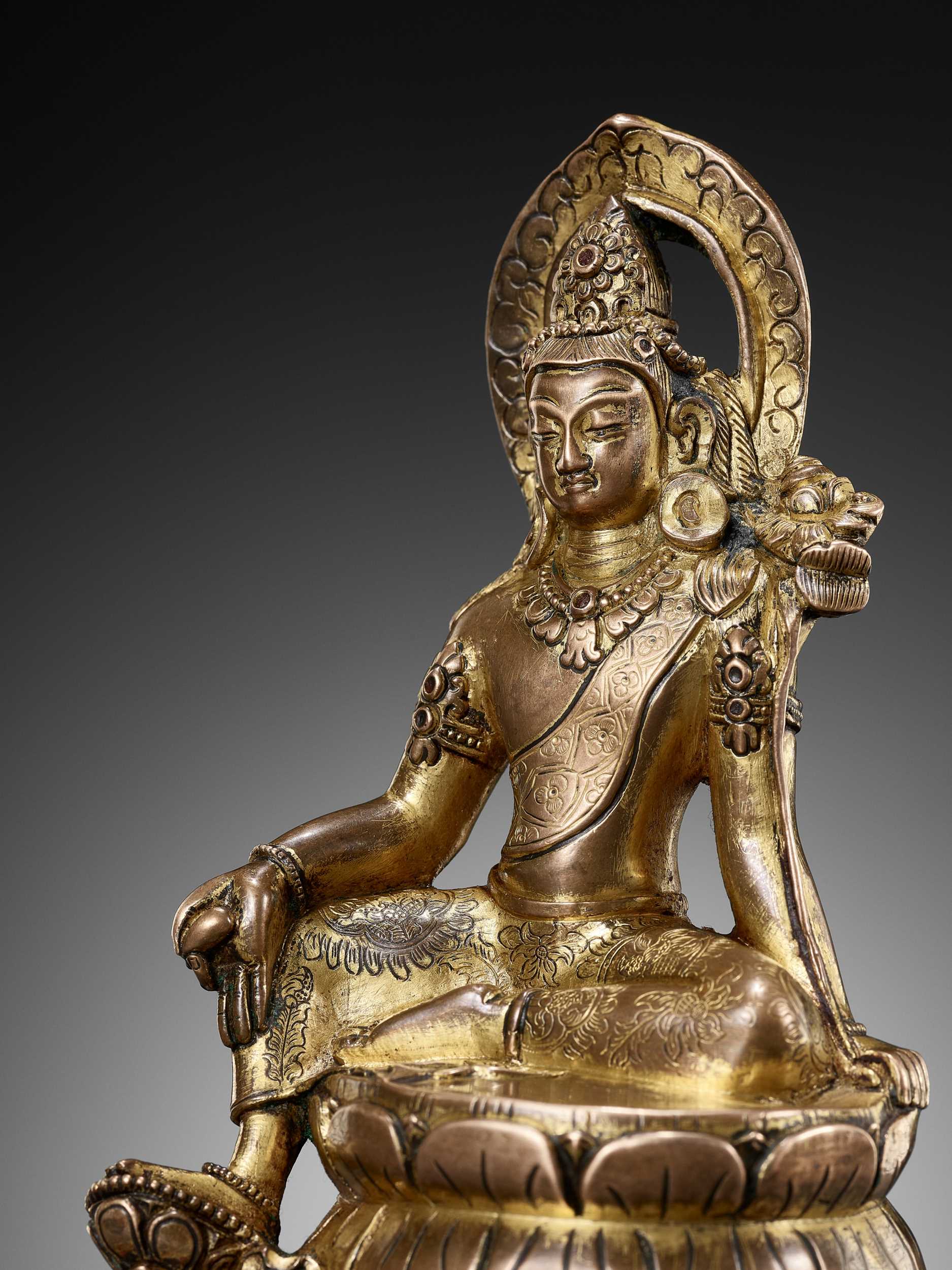
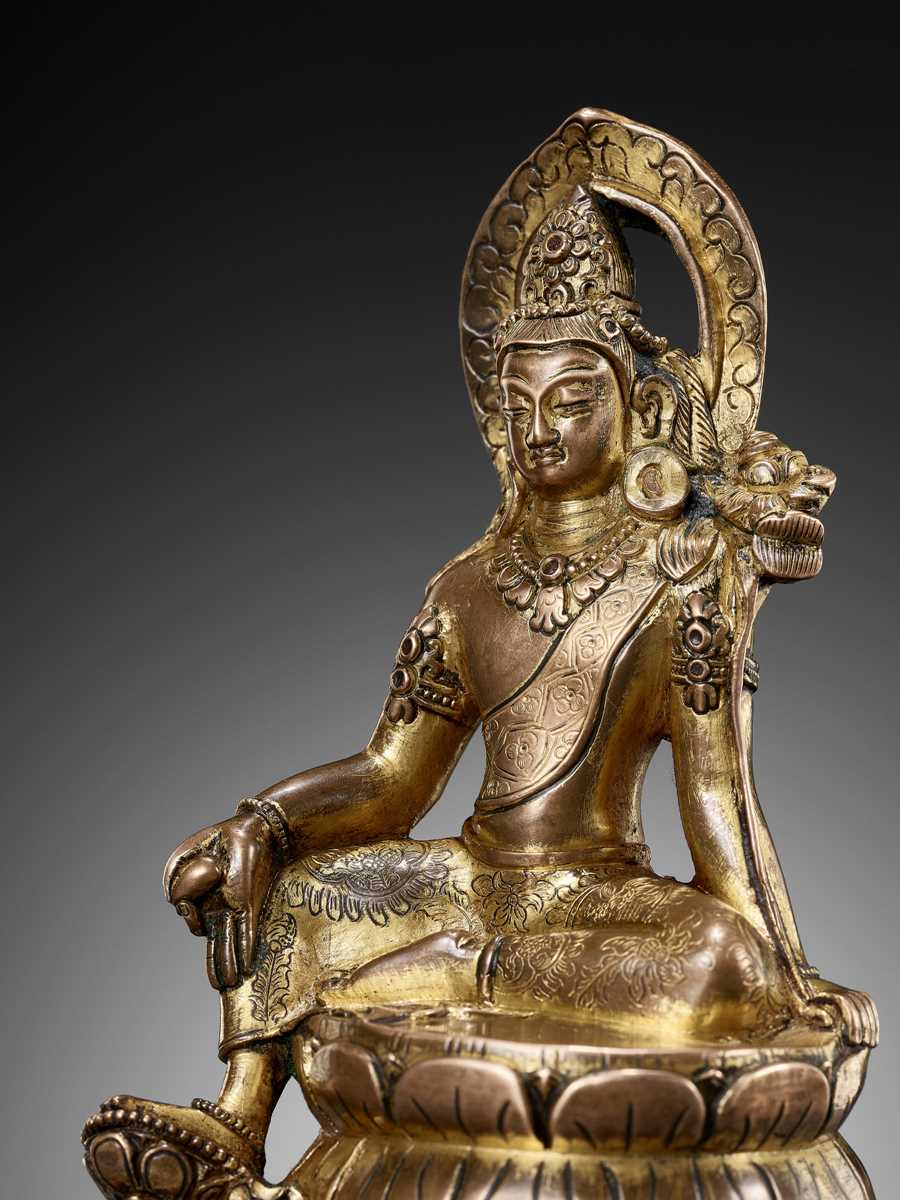


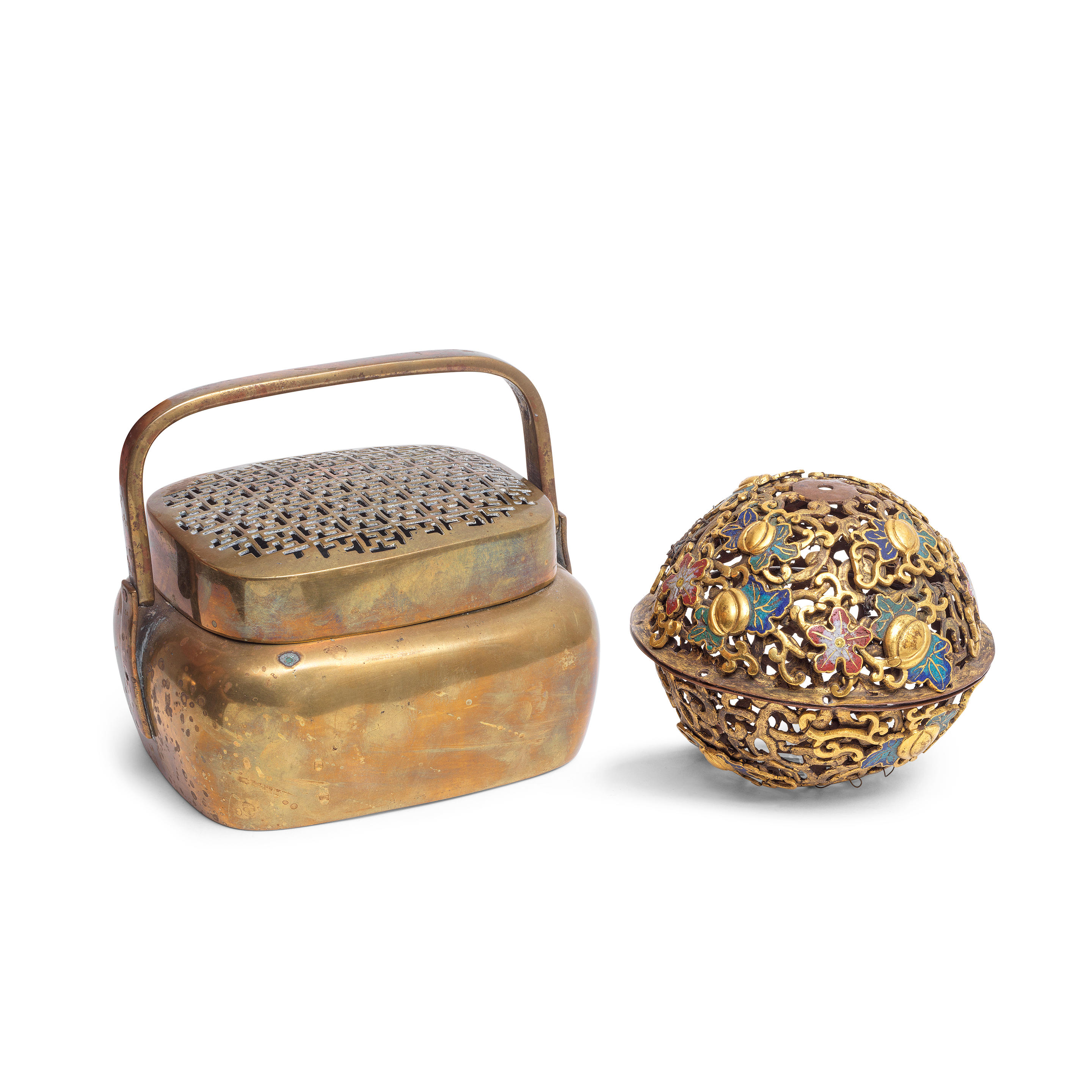




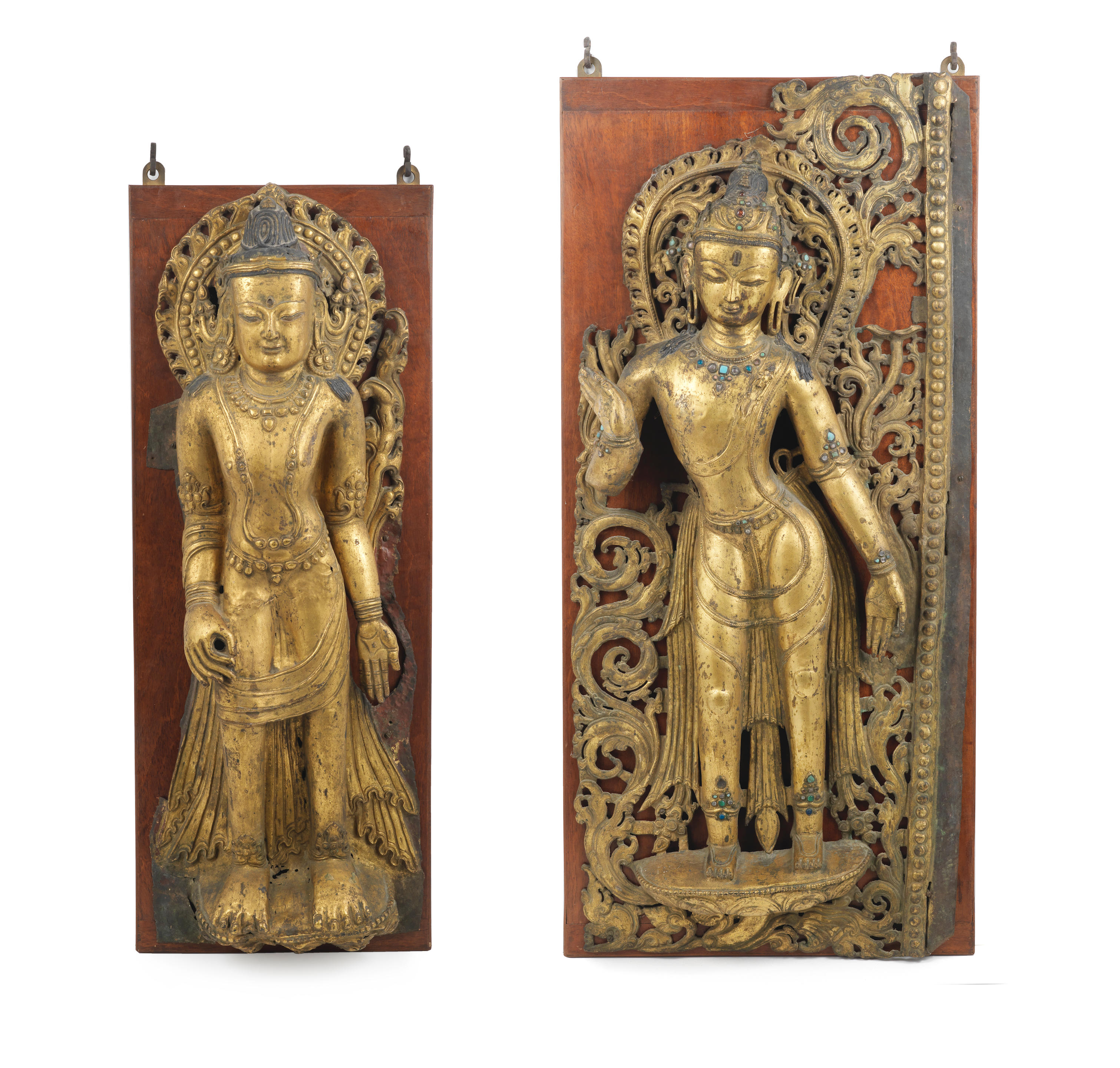
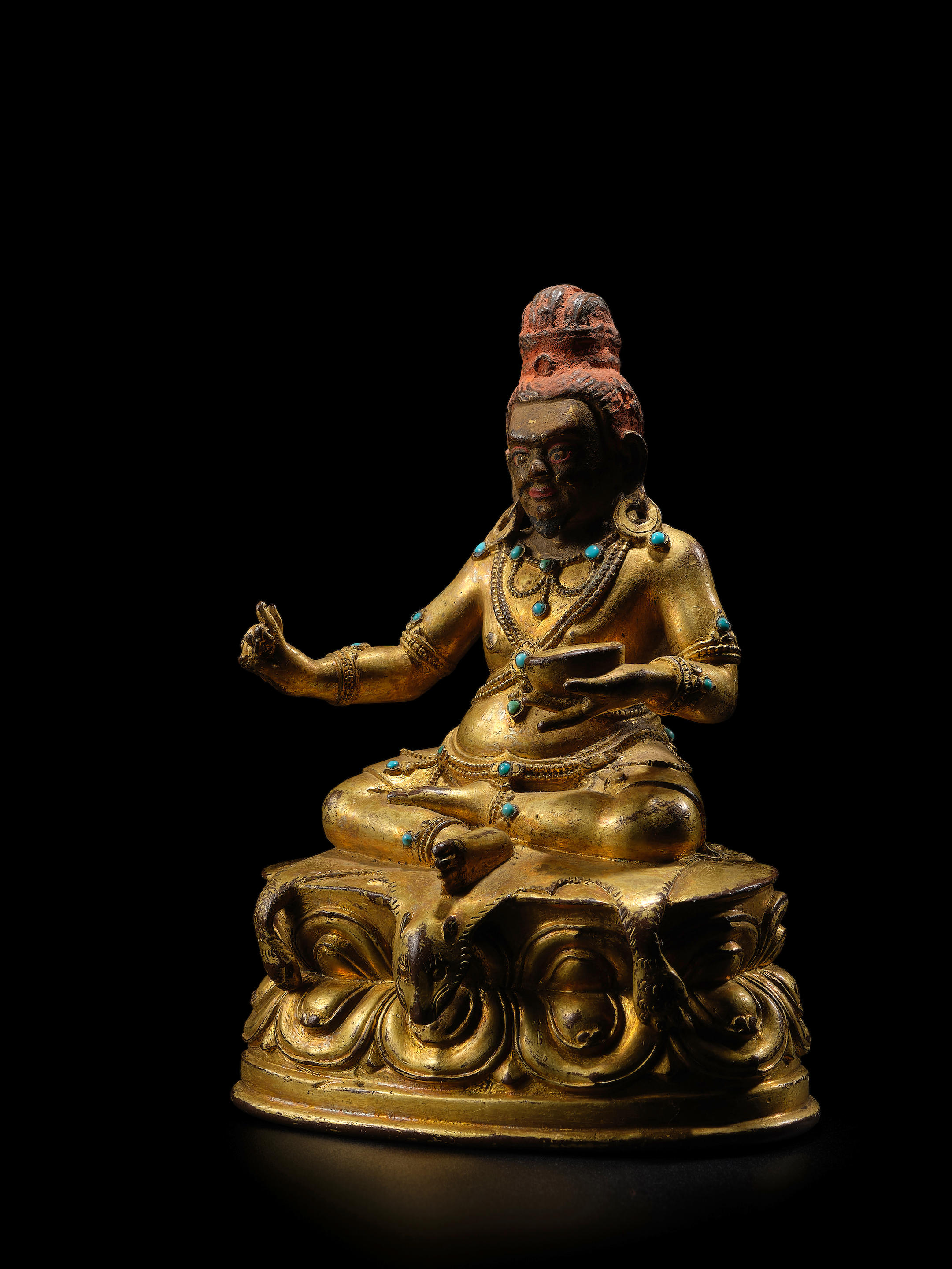

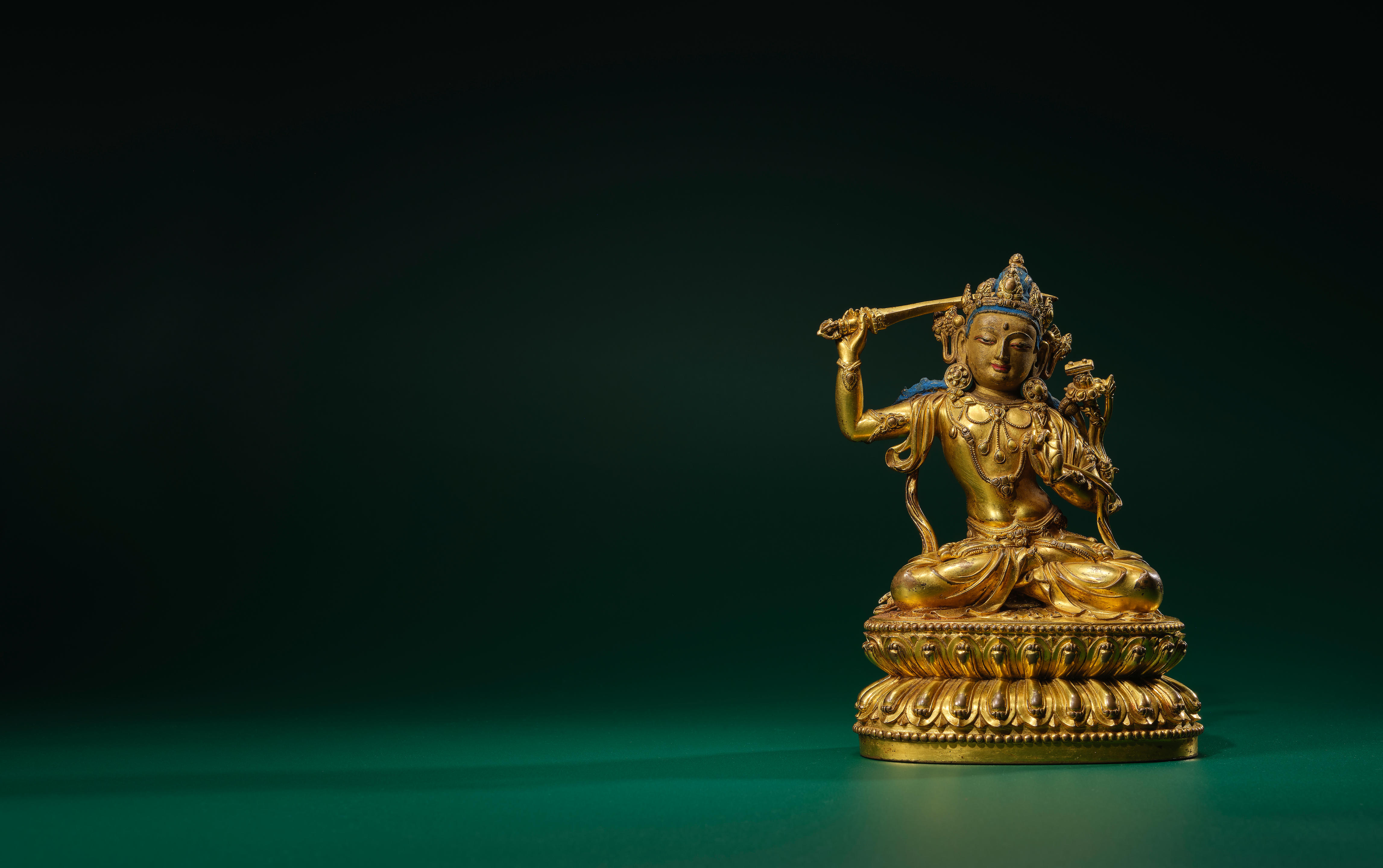
Testen Sie LotSearch und seine Premium-Features 7 Tage - ohne Kosten!
Lassen Sie sich automatisch über neue Objekte in kommenden Auktionen benachrichtigen.
Suchauftrag anlegen